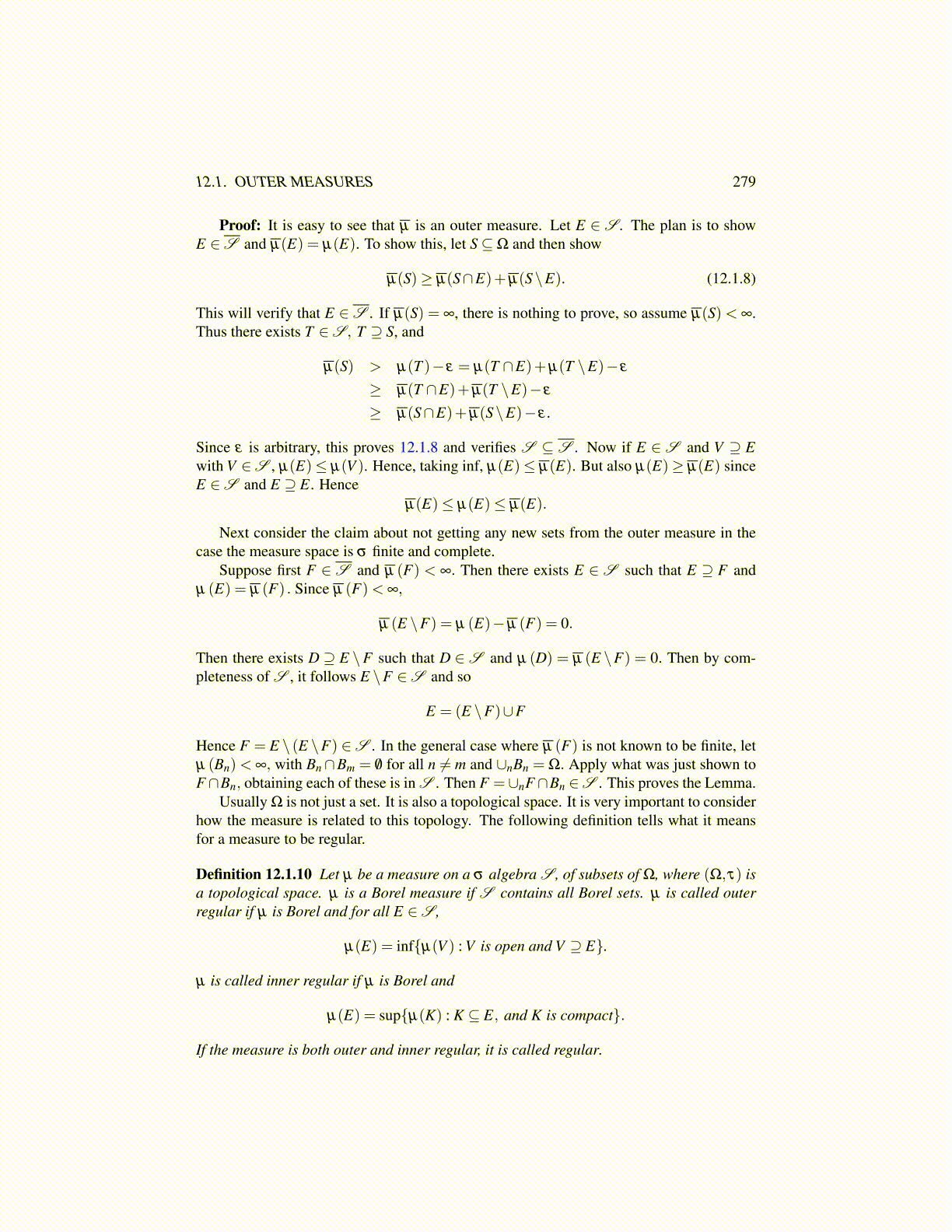
12.1. OUTER MEASURES 279
Proof: It is easy to see that µ is an outer measure. Let E ∈S . The plan is to showE ∈S and µ(E) = µ(E). To show this, let S⊆Ω and then show
µ(S)≥ µ(S∩E)+µ(S\E). (12.1.8)
This will verify that E ∈S . If µ(S) = ∞, there is nothing to prove, so assume µ(S) < ∞.Thus there exists T ∈S, T ⊇ S, and
µ(S) > µ(T )− ε = µ(T ∩E)+µ(T \E)− ε
≥ µ(T ∩E)+µ(T \E)− ε
≥ µ(S∩E)+µ(S\E)− ε .
Since ε is arbitrary, this proves 12.1.8 and verifies S ⊆ S . Now if E ∈ S and V ⊇ Ewith V ∈S , µ(E)≤ µ(V ). Hence, taking inf, µ(E)≤ µ(E). But also µ(E)≥ µ(E) sinceE ∈S and E ⊇ E. Hence
µ(E)≤ µ(E)≤ µ(E).
Next consider the claim about not getting any new sets from the outer measure in thecase the measure space is σ finite and complete.
Suppose first F ∈ S and µ (F) < ∞. Then there exists E ∈ S such that E ⊇ F andµ (E) = µ (F) . Since µ (F)< ∞,
µ (E \F) = µ (E)−µ (F) = 0.
Then there exists D ⊇ E \F such that D ∈S and µ (D) = µ (E \F) = 0. Then by com-pleteness of S , it follows E \F ∈S and so
E = (E \F)∪F
Hence F = E \ (E \F) ∈S . In the general case where µ (F) is not known to be finite, letµ (Bn)< ∞, with Bn∩Bm = /0 for all n ̸= m and ∪nBn = Ω. Apply what was just shown toF∩Bn, obtaining each of these is in S . Then F =∪nF∩Bn ∈S . This proves the Lemma.
Usually Ω is not just a set. It is also a topological space. It is very important to considerhow the measure is related to this topology. The following definition tells what it meansfor a measure to be regular.
Definition 12.1.10 Let µ be a measure on a σ algebra S , of subsets of Ω, where (Ω,τ) isa topological space. µ is a Borel measure if S contains all Borel sets. µ is called outerregular if µ is Borel and for all E ∈S ,
µ(E) = inf{µ(V ) : V is open and V ⊇ E}.
µ is called inner regular if µ is Borel and
µ(E) = sup{µ(K) : K ⊆ E, and K is compact}.
If the measure is both outer and inner regular, it is called regular.